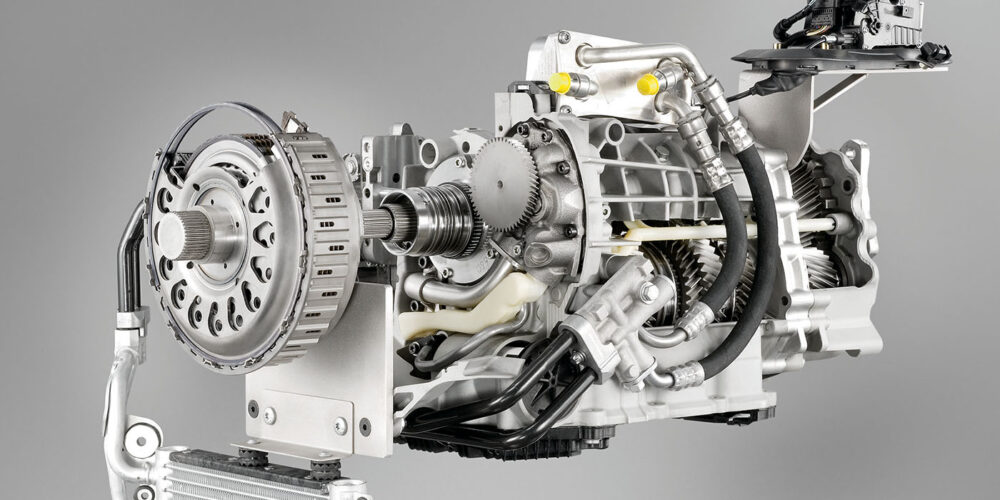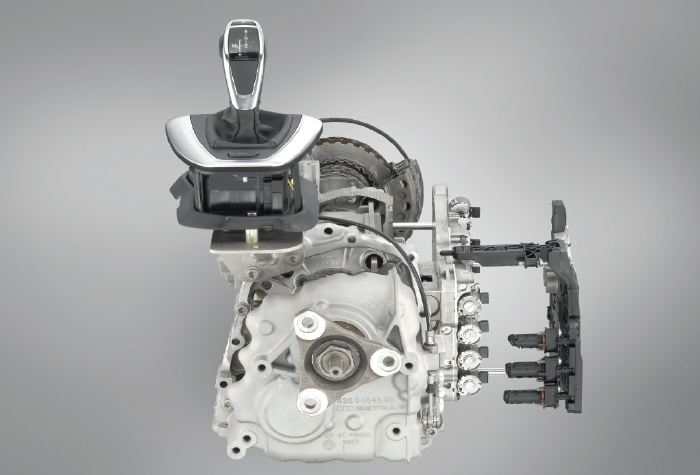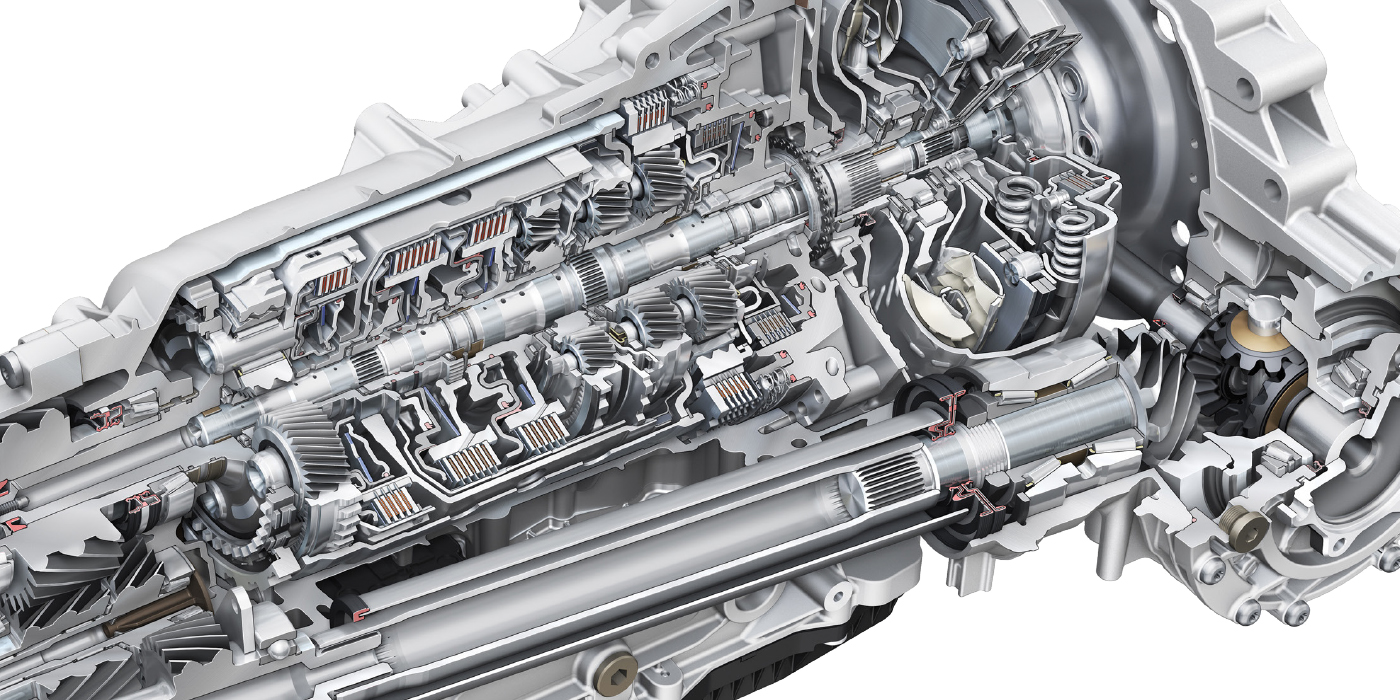The phrase “dual-clutch transmission” or DCT can strike terror in the hearts of BMW engineers and technicians. You will probably never deal with the internals of a DCT transmission like the gears, synchronizers and shafts. You will instead have to repair the external components that control the clutches and cool the fluid. Like a manual transmission, the clutch or clutches are the weak points. Like a driver, the computer will slip the clutches to achieve the best engagement.
BMW uses a wet clutch with separate inboard and outboard sections for the two sub-transmissions. It is a multiple clutch and has eight plates. The clutches are actuated with a special slave controlled by the computer. The pressure for the actuators is regulated at 260 psi.
To control the clutch, the Mechatronic module is looking at many pieces of information. Piezo pressure sensors measure the amount of pressure in the actuators for the two clutches.
The computer is trying to strike a balance between smooth shifts and clutch longevity. The transmission module works with the engine control module to manage torque coming from the engine during launches and shifts. Shifting is controlled by the DCT electronics/hydraulic module on the side of the transmission.
If the Mechatronic unit is replaced, a transmission adaptation procedure must be performed with a scan tool. The calibration procedure ensures that the neutral positions and mechanical end stops will be learned and saved in the transmission control module.
The Mechatronic unit has three temperature sensors. One temperature sensor is positioned after the clutches and the other two measure fluid temperature lower in the transmission.
A BMW DCT transmission has failure modes that will restrict engine torque and change the shift points. The most common trigger for these events is an unexplained increase in fluid temperature in the pan or at the clutch fluid outlet.
The transmission will display an amber icon for transmission temperatures and display the message “Transmission Temperature, Drive Carefully.” The transmission will restrict the engine power and change shift points in an effort to cool down the fluid. The message may go away after the temperatures are reduced or after the key is cycled on some models. This is called a control message 104.
The DCT is currently being used on every BMW ranging from the 2 Series to the 6 Series. Do not fear repairing or diagnosing these transmissions. Most of the issues can be resolved with a good scan tool or scope.















